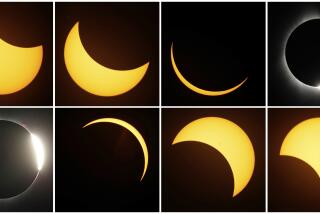This video is a trip -- through the known universe
Astronomers have put the known universe in a box on your computer screen – the 120 million light-years of it within our grasp, at least.
With a mellifluous French-accented narration, some light piano music and sweeping computer animation, the video could become a stoner classic. It also happens to be the most detailed modern cosmography of all that is visible in the sky – and a great deal of what is not.
At nearly 18 minutes long (that’s less than one side of Pink Floyd’s “The Dark Side of the Moon”), the video is not the stuff of the MTV generation and certainly not ready for prime time. But odds are it will reach cult status among astronomers, planetarium addicts and the cosmically inclined.
“I’d like to think this is the first of more ventures along the same line,” said University of Hawaii astrophysicist R. Brent Tully, who was treated to a public presentation of the work for his 70th birthday, in Paris, a week ago. “I think we’re learning how to do it. I think the next time around we’ll do it better.”
Tully worked with a team including Helene Courtois of the University of Lyon, who narrates, and whose son, Jules, accompanies her with an original piano composition.
Putting the video together -- largely the work of Daniel Pomarede of the Institute of Research on Fundamental Laws of the Universe, on the outskirts of Paris -- took months, but the research had gone on for several years. The work has been submitted to the Astronomical Journal.
Few people know the known universe quite like Tully, who mapped it in 1987, on paper. “I don’t know anybody else who’s tried to put something on paper,” Tully said.
(Tully is best known for the Tully-Fisher relation, which correlates a spiral galaxy’s luminosity and rotational speed, and was published with J. Richard Fisher in 1977. It’s a key tool for measuring distances by comparing the intrinsic brightness of a galaxy with its apparent magnitude – how bright it appears.)
What’s not seen is what is most astonishing about the map, which manages to represent aspects of the universe that can only be inferred from data. In this animated view of the universe, whole galaxies are mere “lighthouses” that formed in the gravitational wells of dark matter in a universe of clusters, filaments and voids.
“We actually don’t know how big the whole universe is,” said Tully. “What we talk about is the universe within our horizon, the travel time of light, and that’s been traveling to us since 14 billion years – actually, in that time the universe has expanded, so we have access to something like 40 billion light-years.”
But that’s just what we could potentially see with all our sophisticated space-based telescopes and massive terrestrial arrays. “We’re still picking at the depths of space,” said Tully.
So what Tully and his team have boxed is the local universe, represented in terms better suited for an expanding universe – velocities. “In the maps that you’re seeing there, that’s really only going out a little beyond 3,000 kilometers per second,” he said.
Though that translates to about 120 million light-years, consider that the speed of light is 100 times that outermost velocity. “So we’re only going 1% of the way out,” said Tully. “We’re looking at a little local pocket of the universe.”
Maybe you should just watch the video.







